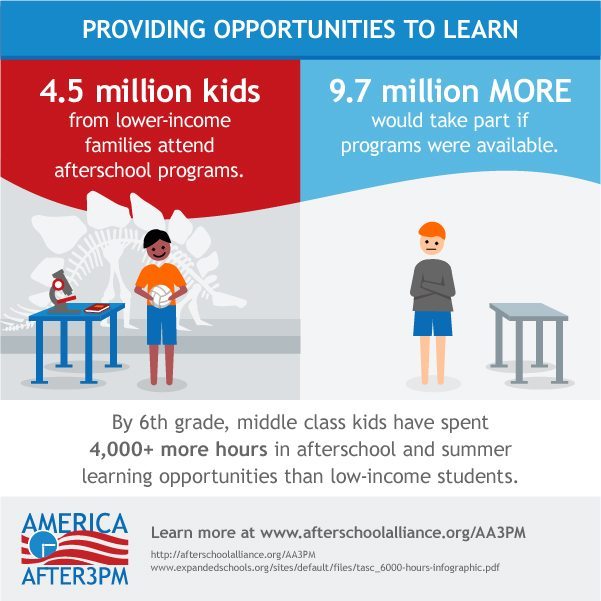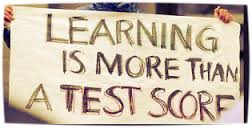As a father of two girls ages 7 and 10, married to an amazing educator of over 20 years, I have a 360-degree perspective of the teaching and learning experience.
As a matter of fact, my 4th grade daughter is my wife’s student. It’s a complete family affair. Most people I share that with have an initial reaction of concern. The most common questions are, “How is that working out for your daughter? Isn’t that weird for her? Does she feel challenged?” All these have merit. What this arrangement has created for our family is that we tend to continue the teaching and learning timeline at home.

This doesn’t necessarily mean that the constructs of the school day are extended into our dining table or living room. It becomes more about expanding the subject matter, questions, activities, content, or curriculum, taking them in a variety of directions. Whether it’s using origami to communicate lessons in geometry and structure integrity, talking about how biomimicry (the study of emulating nature’s time-tested patterns and strategies) helps us become better designers, or appreciating the history behind the lyrics in Lin Manuel-Miranda’s Hamilton, all of it has served as an immersive voyage into context, relevance, and meaning for our kids. The result of this approach has typically ended in them taking back what we expanded on as a family to enrich their learning during the regular school day.
My kids are lucky. As parents, we are also fortunate that our lives allow us to expand on the academic careers of our children. As a teacher, my wife knows she has a champion that ensures that the hard work she puts into the classroom is not gone to waste. In many ways, my family IS the village that we so often talk about in education.
Many kids are not this lucky. Many parents are not this fortunate. Many teachers do not have someone further inspiring what they started.
In 2002, I was offered the opportunity to help start what would be a series of afterschool programs in the City of Los Angeles. Alongside an amazing group of change-makers, we launched the After-School All-Stars program in East and South Central Los Angeles. These neighborhoods sit in unincorporated areas of the city, meaning that they are under-resourced, under-represented, and had definitely fallen behind in a “No Child Left Behind” era. These neighborhoods had suffered years, and one dare say a generation, of low expectations and high rates of poverty and crime. Looking back, it was easy to see the skepticism school principals had when we first arrived on the scene. These particular schools had seen their share of “help” coming in, and just as quickly head out. Teachers and school leaders had very few champions they could lean on. Students had grown accustomed to adults promising more and delivering less. Kids here had few other adults in their lives, as their parents were busy helping their families survive in the literal sense! Parents in these communities felt the helplessness of not having the ability to talk about what their children were experiencing during school. Kids weren’t that lucky. Parents were not that fortunate. Teachers had no champions.
A colleague of mine made a keen observation early in the lifecycle of our programs quoting that “two objects cannot occupy the same space at the same time”. Basic law of physics. This same law existed on the blacktops of these two schools. Our job was to drive out the negative culture that was so prominent by being steadfast and committed to making a difference on these campuses. In doing so, we had the opportunity of changing the feel of the community. Think about that for a moment. For a program to enter neighborhoods such as these and set sights on transforming their aspirations and expectations was a tall order indeed, but it happened.

It started with engaging youth and their attitudes about what it means to learn.
Standardized tests do not account for this. It continued with staff walking into an empty and run down school auditorium with the belief that they could fill the space with students and their families (something the school day had seldom seen). You had to be at this event for it to be “demonstrable”. It was in moments that included a staff member having the vision of taking a handful of beat up acoustic guitars and grow the idea to become a nationally recognized rock music program. As programs grew from 3, 7, 10, 21, 34, and eventually 54 school sites, programs that our current White House administration claims as having no impact have resulted in students and school day leaders giving direct credit to programs like After-School All-Stars for their high school success, college entry AND graduation, with youth appreciating how we set them up for a lifetime of prosperity and giving back.
The stories are too many to keep up with. A young lady without a voice finding it in the All-Stars of Rock music program, building up her courage and vision all the way to a Yale Education. It was evident in a young man’s memory of the program being the first place where he had a desk to do homework (home only offered the floor). That young man is now sitting at a school desk at the Stanford Graduate School of Business. Another is the story of a young lady who thought our site leader’s idea of her picking up basketball was a joke. There’s nothing funny about her full athletic scholarship to Cal Berkley where she was one of the stars of the Pac 12 division of schools, playing basketball for the Cal Bears. She can look at the basketball she now dribbles for the Atlanta Dream and laugh at the irony of it all. You can see it in a young man out of South Florida who’s on a mission to become a police officer, finish college, get into law school, and then the White House. Looking back, he shares, “After-School All-Stars helped me deal with my anger. I started writing poetry and played football. So through afterschool, I was actually working with my anger constructively. I was a lot happier.” Part of his White House journey has begun with him meeting the former First Lady Michelle Obama during a summer experience with After-School All-Stars.
As programs like ours continue, so do the stories.
More and more of our alumni are coming back with narratives influenced by our program’s ability to expand their learning. Fast-forward to the NOW, we are standing at the crossroads of a revolution in what it means to prepare a young person for the future. More and more businesses are asking our educational institutions to expand the definition of what it means to learn. Scour the web and you will find a collection of credible research and articles asking questions such as, “We’re Graduating More Students Than Ever, but Are They Prepared for Life After High School?” (Slate.com/ Laura Moser – April 2016).
Google cites intangibles when considering future employees. They call it “Googleyness” and it includes attributes like enjoying fun (who doesn’t), a certain dose of intellectual humility (it’s hard to learn if you can’t admit that you might be wrong), a strong measure of conscientiousness (we want owners, not employees), comfort with ambiguity (we don’t know how our business will evolve, and navigating Google internally requires dealing with a lot of ambiguity), and evidence that you’ve taken some courageous or interesting paths in your life.

Enrichment programs that include coding, video game design, makerspace, and entrepreneurship all have elements of ambiguity and a high need for collaboration and problem solving strategies. All this requires an expansion of the teaching and learning norms that we’re familiar with. The new economy is pushing for new ways to facilitate the success of our students. Innovation does not look at test scores, homework completion, and compliance. The future calls our young people to take risks in their learning, to go after things that others think as impossible or unlikely, and to think oneself as the solution to today’s and tomorrow’s challenges. It requires expanding the definition of success. This calls for a village of adults that youth can count on, champions that teachers can lean on, and people that serve as an extension of a parent’s concern for the academic and social well-being of their children.
As a leader of a national non-profit committed to expanding the opportunities for youth across the country through afterschool programs, it is imperative that the current administration does the following:
- Take the data that says afterschool programs have no “demonstrable impact” and share that with the hundreds of corporations, foundations, state and city governments, and individual donors who can account for the longstanding effectiveness of such programs.
- Sit with constituents from rural and urban communities alike that ushered in the new administration and ask them about how afterschool programs have helped their young people succeed.
- Talk to school principals about the influence and support their afterschool programs have offered in their schools’ quest for student achievement.
- Finally, sit down with students to appreciate the opportunities, experiences, and personal successes they have had because of afterschool.

I look back at After-School All-Stars and think about how lucky students have been in having the opportunity to expand their academic experiences. I think back at how fortunate parents have been to know they can provide for their families without worry for the safety and development of their children. I think of school teachers that look at afterschool practitioners as having their back, trusting that the learning continues after the school bell rings.
We all know it take a village. Does our leadership really believe that taking away the village is the answer? If so, then village needs to stand up and say, “not on my watch!”
For breakfast, I had an omelet, fresh fruit, and an iced coffee!
Author: @carlossantini
